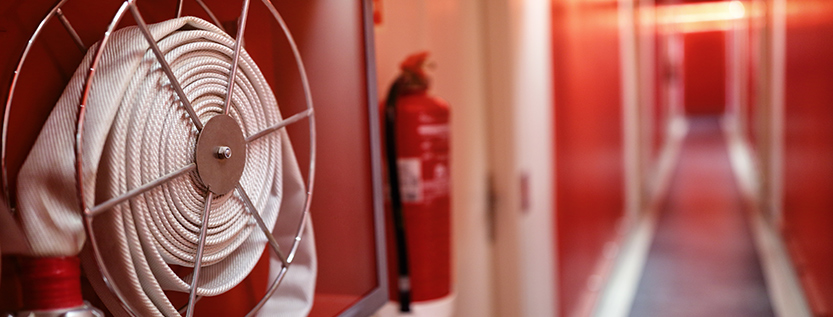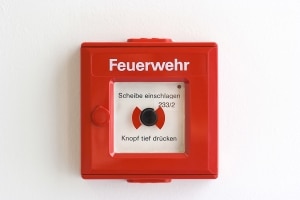
Technical Fire Protection
Conception of fire protection systems
For a modern building to function efficiently, many factors must interact. An important part of this is the technical building equipment with systems for heating, ventilation, water supply and others. Systems that ensure the safety of people, machinery and equipment in the building also play a vital role. This also includes technical fire protection.
What does technical fire protection mean?
It is a field of technical building equipment that serves to prevent or fight fires. Since it is a sub-area of building equipment engineering, the term technical fire protection covers all systems or equipment that are permanently installed in the building or are constantly connected to it. Depending on the task, technical fire protection equipment serves different purposes.
Preventive fire protection
Preventive fire protection includes measures to prevent fires from breaking out. This begins with the distance between individual buildings, which should be large enough to prevent a fire from spreading from one building to the next.
It continues with the selection of building materials, which must meet high standards, especially in social buildings like schools or special buildings such as hospitals. When planning the building, escape routes must be provided that allow people to be evacuated quickly, even from the upper floors.
Fire alarm systems
These are permanently installed alarm signals that automatically trigger an alarm in case of either smoke or heat. This is usually routed to the building’s security centre, the main control centre where all the threads come together. An employee of the security service or building services takes further measures in case of an alarm. However, subsequently installed smoke detectors are not part of the technical fire protection equipment.
Facilities for fire fighting or containment
This category distinguishes between active and passive technical fire protection equipment.
Active fire fighting equipment are permanently installed extinguishing systems. Sprinkler systems are installed in many warehouses, but also in archives or other facilities. If the temperature rises above a limit value, the system triggers and sprays a veil of water droplets which nips the incipient fires in the bud.
In rooms with particularly sensitive equipment, for example in control centres or data centres, special extinguishing systems are used which either spray extinguishing foam or suffocate the fire with inert gases, including carbon dioxide.
Before such extinguishing systems are used, however, it is essential to evacuate the room in question because the gas displaces the oxygen needed to breathe. Even extinguishing foam must be handled with care, as it can be toxic depending on the type of material used. The equipment for active fire-fighting includes the supply lines of the extinguishing system and the sensors which trigger them in the event of fire.
In most fires, the greatest danger does not come from the fire but from the smoke. This is why smoke extraction systems also belong to this category. Although they do not fight the fire, they ensure that escape routes such as staircases or tunnels remain free of smoke by starting powerful fans when they are switched on, which either extract the smoke or create overpressure to prevent smoke from entering the escape route.
Passive fire-fighting systems are systems or installations designed to prevent or at least delay the spread of fire within a building. This includes, for example, fire walls and fire doors. Fire dampers are installed in cable ducts and air ducts to prevent a fire from spreading along this route.
Technical fire protection systems are subject to strict regulations and must be inspected and accepted prior to commissioning. Depending on the type of system, the inspection must be repeated at regular, legally prescribed intervals to ensure its proper functioning in the event of a fire. In many fires, human lives are at stake and depend on the proper functioning of the technical fire protection equipment.
Do you deal with technical fire protection in your premises? Then ask for our professional advice. We would like to support you and are eager to assist you!




